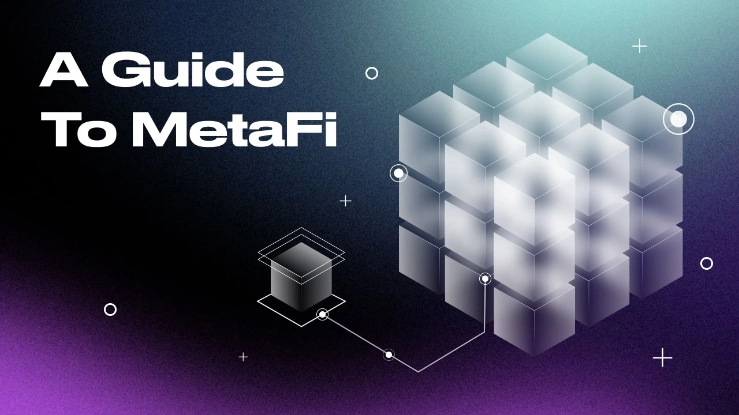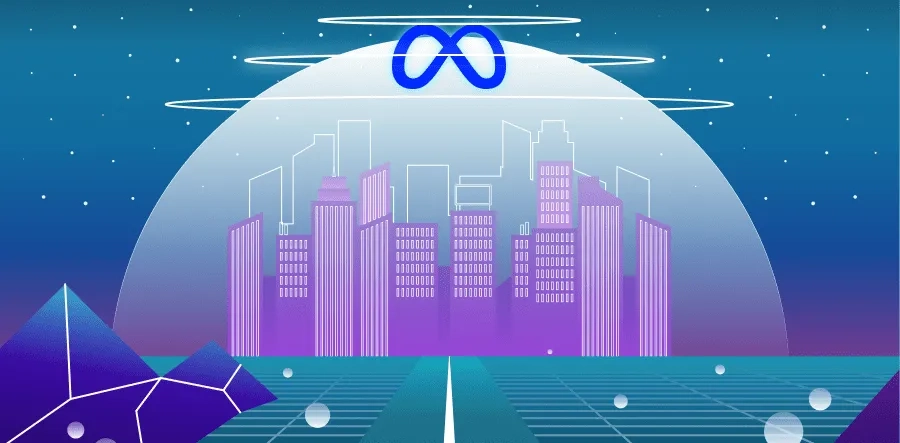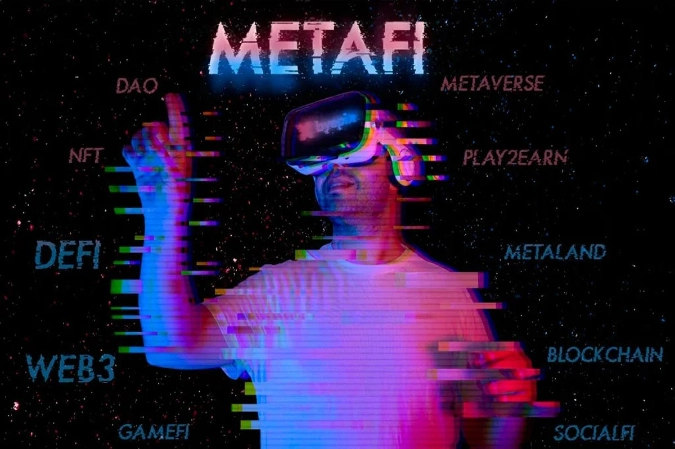What is MetaFi?
MetaFi is a combination of two words – “Meta,” which stands for metadata, and “Fi,” short for DeFi (decentralized finance). MetaFi introduces a new model aiming to standardize blockchain technology for large-scale traditional Web2 applications, including gaming, social media, and the metaverse. This creates a common standard, improving interoperability among different applications.

MetaFi provides advanced DeFi infrastructure for diverse projects such as the metaverse, GameFi, SocialFi, Web3, and NFTs. The ability to identify asset ownership through metadata is crucial for MetaFi to achieve this. The idea of MetaFi is to integrate blockchain functionalities into an interoperable Meta ecosystem through metadata standards used across multiple platforms and blockchains. MetaFi can include a combination of fungible tokens and non-fungible tokens (NFTs) along with community governance like DAOs.
The goal of MetaFi is to build and promote a new ecosystem based on standardized metadata parameters. This not only helps to drive the mass adoption of Web 3 and blockchain technology but also brings new utilities to users.
How MetaFi Works

Leveraging Blockchain Metadata
One of the core foundations of MetaFi is the use of metadata from blockchain. Popular blockchains like Bitcoin and Ethereum store valuable information about asset types within the network.
For example, when a user owns an NFT, the related metadata includes detailed information about the digital artwork, the creator, and the ownership history. Additionally, Bitcoin transactions can also include metadata, providing new possibilities for enhancing blockchain functionalities.
Interoperability and Standardization
MetaFi is developed based on the idea of interoperability between different blockchains. To achieve this, MetaFi establishes generalized metadata standards that can be deployed across various blockchains. If all blockchains can display metadata in a similar structured way, MetaFi will enable high compatibility between different blockchain ecosystems.
For example, an NFT Marketplace operating within MetaFi can seamlessly analyze and categorize NFTs from multiple blockchains, allowing users to view, interact, and trade NFTs from Ethereum, BNB Chain, and other blockchains in the same virtual environment.
Machine-Readable and Sortable Assets
MetaFi ensures that assets like coins/tokens and NFTs are machine-readable and sortable by adhering to metadata standards. This opens up exciting possibilities for automation and data-driven decision-making within the metaverse.
For example, a MetaFi-supported metaverse can automatically evaluate the risks and values of a diverse asset portfolio spread across various blockchains, presenting information about asset types in an intuitive manner.
Related: What is Holding Coins? How to Optimize Profits When Holding Coins
Technologies Needed to Develop MetaFi
- Blockchain Layer 1: Ethereum is a suitable choice due to its robust smart contract development and large community. BNB Chain is also an attractive option with low transaction fees and fast transaction confirmation.
- Programming Language: Solidity is the optimal programming language for creating smart contracts on Ethereum and other EVM-compatible blockchains.
- Decentralized Identity – DID: DID standards are crucial for managing user identities and ensuring access to digital assets.
- Oracle: Chainlink provides oracles that allow MetaFi applications to access and standardize real-world data.
- Blockchain Layer 2: Layer 2 blockchains like rollups and sidechains help enhance scalability and reduce transaction costs.
- Interoperability Protocols: Polkadot and Cosmos provide cross-chain interoperability, helping MetaFi projects connect and expand their reach.
- JavaScript Development: Web3.js and Ether.js are JavaScript libraries that help interact with the Ethereum blockchain and EVM.
- Front-End Development: React and Vue.js are popular front-end libraries for building user interfaces.
- Back-End Development: Node.js and Express.js are suitable choices for server-side development and API handling.
- Database Solutions: MongoDB and PostgreSQL are popular databases for managing user data.
- Security Tools: MythX and OpenZeppelin provide security tools and smart contract libraries.
- Testing and Debugging Tools: Truffle and Hardhat are tools that help test and deploy smart contracts.
Applications of MetaFi
Metaverse
The metaverse creates a virtual space full of activities and experiences for users to participate in. MetaFi helps connect and interact between different virtual worlds, allowing users to transfer assets seamlessly and experience a more diverse and enriched metaverse.
GameFi
GameFi is a field where players can earn real money or virtual assets through gaming. MetaFi provides the ability to collect and manage virtual assets from multiple games, facilitating a rich and diverse gaming experience.
Marketplace
A MetaFi-based marketplace will aggregate and list assets from multiple blockchains, providing a unified interface for collectors and investors. This reduces the hassle of trading NFTs and other digital assets, creating a smooth and convenient trading process.
Cross-Chain
MetaFi helps bridge the liquidity gap between DeFi platforms across different blockchains. This creates a standardized cross-chain bridge, allowing users to trade coins/tokens and NFTs seamlessly across various blockchains.
Yield Farming NFT
MetaFi introduces the concept of Yield Farming NFTs, allowing users to leverage NFTs to earn profits by participating in activities like staking or using them as collateral.
DAO
MetaFi supports decentralized organizations (DAOs) in managing and making decisions related to various types of assets more efficiently, improving transparency and interoperability in the governance process.
Limitations of MetaFi

MetaFi sets high technological requirements, especially for interoperability between different blockchains. Research and improvement in Layer 1 blockchain technology are needed to access decentralized applications more easily. Another challenge is building sustainable tokenomics models and clear, transparent governance models.
Future of MetaFi
The future of MetaFi is gradually unfolding, with some use cases already ready to be introduced to users. MetaFi will play a crucial role in developing decentralized identity and reputation management systems. However, stable and interoperable projects with multi-chain features and bridges are needed to facilitate data and asset transmission.
Conclusion
MetaFi opens up a new world of potential in connecting the virtual world and decentralized finance. It brings new opportunities in enhancing liquidity, asset management, and creating diverse user experiences. With a blend of creativity and commitment, MetaFi has the potential to drive the development of the digital world, benefiting both the user community and the decentralized finance industry.
Based on the article “What is MetaFi? MetaFi Applications You Need to Know,” do you now understand MetaFi? If not, please leave a comment below to get your questions answered right away!










Wow,that great.
How would MetaFi create an enabling society for all?
AZCOIN is what
Will metafi offers free airdrops in the future?